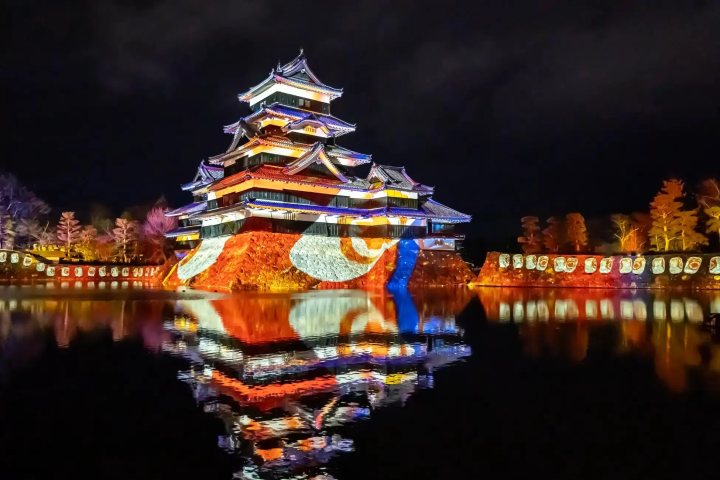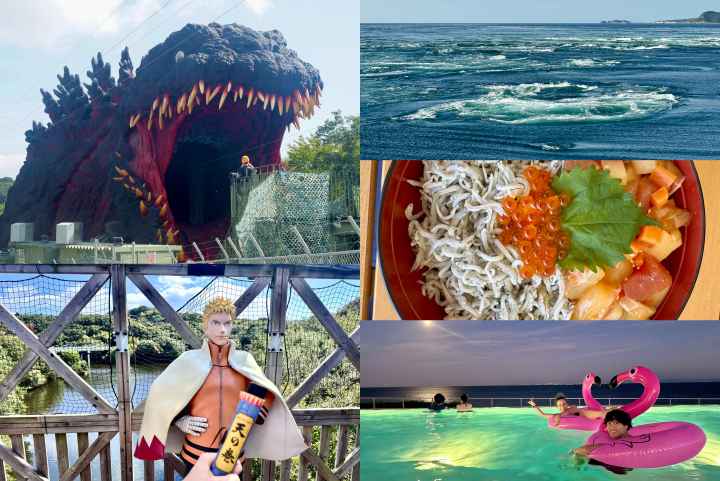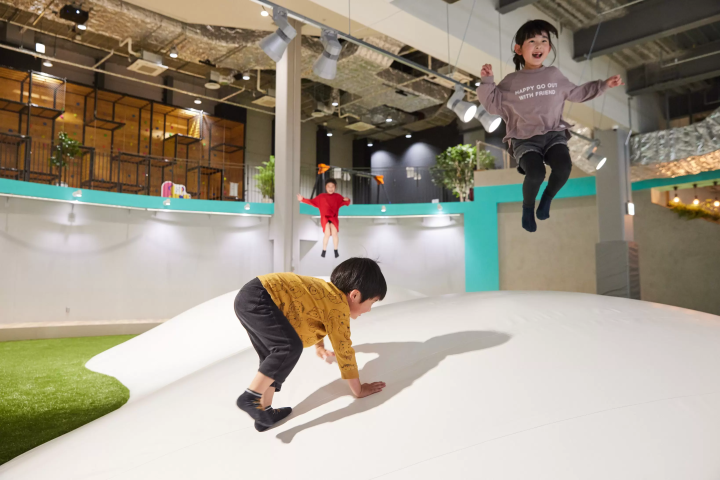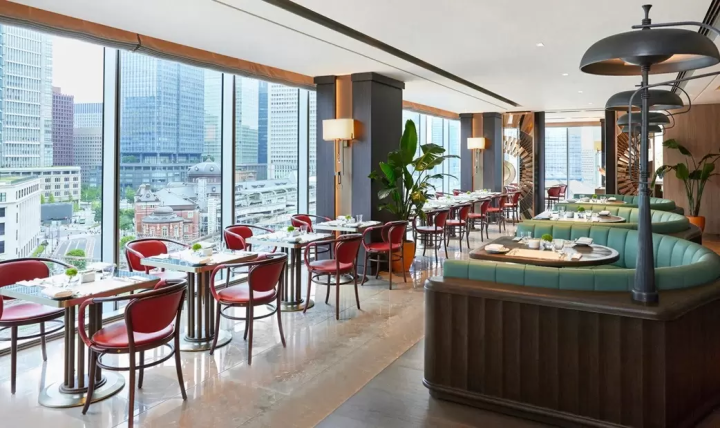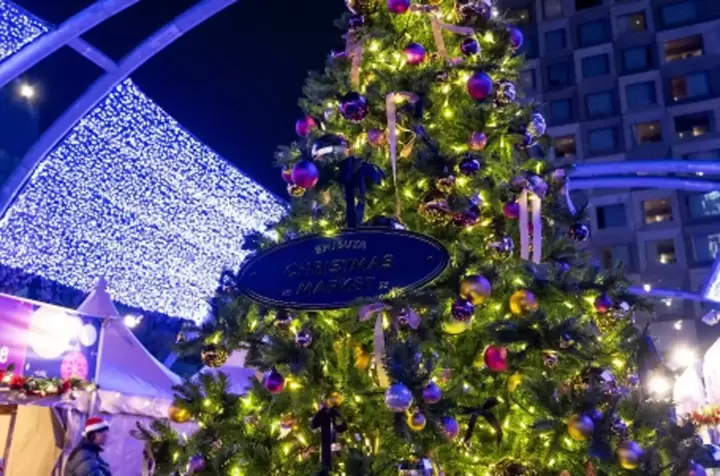Okayama and Kurashiki Guide: Travel, Local Food, Festivals

This travel guide introduces the charms of Okayama, a region famous for its wonderful hot springs, traditional atmosphere of the old townscapes, fine food, and festivals.
Okayama: A Treasure Trove of Natural Scenery and Japanese Culture
Okayama Prefecture is located in western Japan, by the Seto Inland Sea. The prefecture is known for its rich natural environment and hot springs.
Kurashiki City, a famous jokamachi (castle town) where visitors can enjoy the Edo Period scenery, and Korakuen, one of the three great Japanese gardens, are both located in Okayama.
Okayama Travel Guide
1. Access to Okayama
2. From Okayama to the Sightseeing Spots
3. Transportation within Okayama
4. Okayama Area Guide
5. Information Centers in Okayama City
6. Sightseeing Spots in Okayama City
7. Recommended Routes in Okayama
8. Information Centers in Kurashiki City
9. Sightseeing Spots in Kurashiki
10. Recommended Routes in Kurashiki
11. Hot Springs in Okayama
12. Okayama Festivals
13. Activities In Okayama
14. Souvenirs from Okayama
15. Shopping in Okayama
16. Hotels in Okayama and Kurashiki
17. Local Food in Okayama
18. Local Climate and Clothing
19. The Story of Momotaro
20. Travel Tips
Read also
Access to Okayama
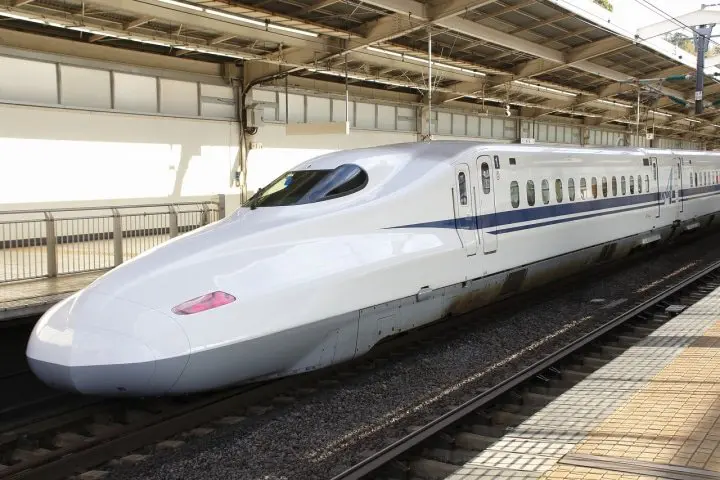
photo by Pixta
From Tokyo to Okayama
There are three routes by which one can reach Okayama from Tokyo: Shinkansen, bus, and airplane.
Shinkansen
From Tokyo Station, the Tokaido-Sanyo Shinkansen goes directly to Okayama Station. The fare costs around 17,660 yen and takes around three and a half hours one-way.
Due to the large expense, We recommend using a JR Pass when traveling to and around Okayama. See the following link for more information: JR Pass Details and Booking via Klook
Highway Bus
There are highway buses to Okayama, and although it takes time, this is the cheapest means of transportation to Okayama. The ride takes about 10 hours, and the fare ranges from 3,000 yen to 8,000 yen, depending on the season.
We recommend searching and purchasing a ticket on Kosokubus.com for your ride to Okayama.
Airplane
From Haneda Airport, there are domestic flights to Okayama Airport. This route may be convenient if you are arriving at Haneda. The flight to Okayama takes about eighty minutes, and the fare ranges from 15,000 to 25,000 yen.
From Osaka to Okayama
There are two routes to take to get from Osaka (or Kyoto) to Okayama: Shinkansen is highly recommended, and riding the highway bus is also possible.
Shinkansen
The fastest route to Okayama is to take the Sanyo Shinkansen from Shin-Osaka Station. "Nozomi" and "Sakura" run on this route, and since there isn't much difference between the two trains, visitors should board whichever train fits their travel plans. The ride takes 45 minutes, and the fare is approximately 6,350 yen one-way.
Highway Bus
There are also highway buses from Osaka to Okayama, including a bus that leaves Kansai International Airport (KIX) to Okayama Station, which is convenient for those arriving at the airport. The ride from KIX to Okayama Station takes about three and a half hours, and the fare ranges from 3,000 yen to 5,000 yen. The bus ride from Osaka Station to Okayama Station takes about three hours, and the fare ranges from 3,000 yen to 4,000 yen.
Access from Okayama to the Sightseeing Spots
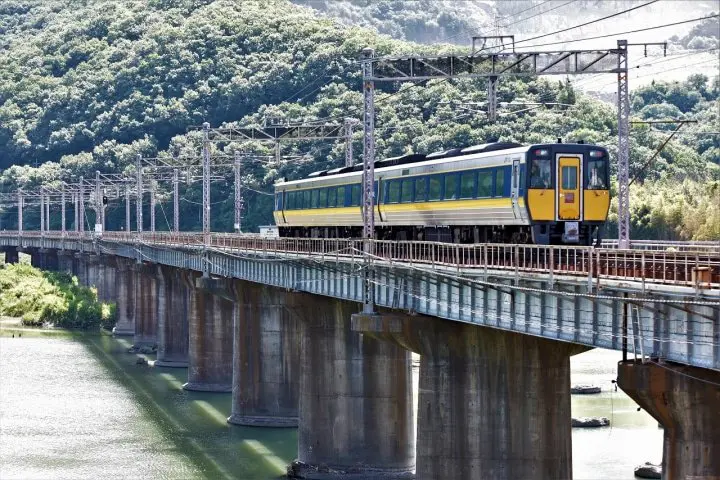
photo by Pixta
To Kurashiki
From Okayama Station, take the Sanyo Main Line to Kurashiki Station. The ride takes about 16 minutes, and the fare is 330 yen.
If you are arriving at Okayama Airport, take the bus that heads for Kurashiki. The ride takes about 35 minutes, and the fare is 1,150 yen.
To Tsuyama
From Okayama Station, take the Tsuyama Line to Tsuyama, home of Tsuyama Castle. The ride on the rapid service train takes about an hour, and the fare is 1140 yen.
To Ushimado
[Okayama Station] (JR Akoh Line) -> [Saidaiji Station] (Bus) -> [Ushimado]
Ushimado is famous for its seaside scenery of the vast olive fields. From Okayama Station, take the JR Akoh Line to Saidaiji Station, and switch to the bus headed for Ushimado. The whole ride takes about an hour, and the fare is 880 yen.
To Yunogo Onsen
From Okayama Station, take the Uno Bus headed for Yunogo Onsen, the prominent hot springs area in Okayama. The ride takes about an hour and 40 minutes, and the fare is 1100 yen.
To Yubara Onsen
From Okayama Station, take the Chutetsu Bus (Katsuyama Line) headed for Katsuyama Center, and switch to Maniwa-kun, a community service bus. The ride takes two hours and 35 minutes, and the fare is approximately 2400 yen.
To Okutsu Onsen
From Okayama Station, take the JR Tsuyama Line to Tsuyama Station, and switch to Chutetsu Bus (Ishikoshi Line). The ride takes two hours and 40 minutes, and the fare is approximately 2100 yen.
Transportation within Okayama

photo by Pixta
Trains
There are ten JR lines running through Okayama Prefecture. The lines spread out from Okayama City, where the airport and the shinkansen station are located, so visitors should use the JR lines to their final destinations. JR is also convenient when moving to other prefectures, as well.
Trams
Okayama Electric Tramway operates the trams in Okayama City. The fare ranges from 100 to 140 yen, so it's easy to ride, and perfect to reach the sightseeing spots in the city areas.
There is a one-day pass for the trams priced at 400 yen. Those who plan to repeatedly use the trams should buy this pass.
For further information, please read OKAYAMA - Hop on a tram to get to the popular tourist destinations, "Korakuen"and "Okayama castle"!.
Bus
Using the local bus is another option in sightseeing. It may be confusing at first, but in some cases the bus may be more useful than riding the train. Some bus routes offer a one-day ticket, so checking the routes in accordance with your travel plans may help.
Bicycles
Okayama City offers a community cycle service called "momo-chari." There are also rental cycle shops, so it might be fun to ride a bicycle to the sightseeing spots.
Okayama Area Guide
Okayama City Area
Okayama City is located in the southern central area of the prefecture. Prominent sightseeing spots such as Okayama Castle and Korakuen are located here. The trams reach various spots, so it is easy to move around from one spot to another.
Okayama Station, where the shinkansen stops, and Okayama Airport is also located in the city. It is easy to access the various sightseeing spots in the prefecture from Okayama City, as it serves as the hub in regards to transportation.
Kurashiki, Sosha, Tamano and Kasaoka Area
Kurashiki, Sosha, Tamano and Kasaoka are four cities located west of Okayama City. Many old buildings are preserved in these cities, a contrast to the modern scenery of Okayama City.
Buildings of the Edo Period are preserved in Kurashiki, and the sight of a row of traditional houses built more than 100 years ago is truly impressive. This is a must-visit area for those who want to know how Japan used to be in the olden days.
Bizen and Ushimado Area
Bizen and Ushimado are both port towns where visitors can enjoy marine sports in the beautiful Seto Inland Sea.
This area also offers fresh seafood cuisine and olives, the latter of which are a special product of the Seto Inland Sea. If you want to enjoy seafood during your visit, try this area.
Tsuyama and Mimasaka Area
Tsuyama and Mimasaka are located in the northeastern region of the prefecture, in the middle of nature and surrounded by mountains.
Yunogo Onsen, a hot springs area, and a scenic waterfall are nearby, along with cultural spots such as Tsuyama Castle and museums. The temperature tends to drop drastically in winter, so visitors should be prepared for the cold weather.
Niimi, Takahashi and Hiruzen Area
This area is located in the northwestern region of the prefecture. This is the highlands with the mountain ranges rising, and the scenery is completely different from that of the southern seaside regions.
There are various scenic spots in this area, and Takahashi City is famous as a jokamachi (castle town), with historic sightseeing spots. Instead of trains, using a rental car may be a better option in this area.
Tourist Information Centers in Okayama City
There are three information centers in Okayama City: Momotaro Tourist Information Center, Okayama Tourist Information Office, and Izushi Shiromachi Studio. These facilities offer sightseeing information and pamphlets, so they're worth a look.
Momotaro Tourist Information Center
Address: Okayama, Kita ward, Ekimoto-cho, Ichibangai-chika, Rokugo-saki
Business Hours: 9:00 a.m. - 8:00 p.m.
Telephone: +81-86-222-2912
Okayama Tourist Information Office
Address: Okayama, Kita ward, Ekimoto-cho 1-1 (Second floor of the JR Okayama Station)
Business Hours: 9:00 a.m. - 6:00 p.m.
Izushi Shiromachi Studio
Address: Okayama, Kita ward, Izuishi-cho 1-6-6
Business Hours: 9:00 a.m. - 5:30 p.m.
Telephone: +81-86-206-5124
10 Sightseeing Spots in Okayama City
1. Okayama Castle

photo by Pixta
Okayama Castle is the symbol of Okayama City. It was originally built in the Edo Period, and the exterior has been reconstructed. The contrast between the black castle walls and the golden shachihoko (a fabulous creature shaped like a fish with a lionlike head) is impressive.
The Tsukimi Tower is preserved in its original Edo Period style. Visitors walking through this castle can appreciate its rich history.
Address: Okayama, Okayama, Kita ward, Marunouchi 2-3-1
2. Korakuen
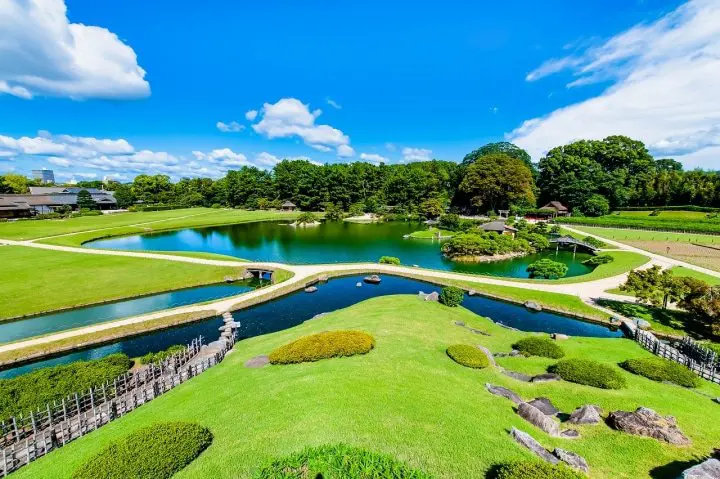
photo by Pixta
Korakuen is one of the three great gardens of Japan. This garden was built by the lord of Okayama Castle in the Edo Period, and modern-day visitors can enjoy traditional Japanese architecture and the landscape which offers a different view every season.
In summer, the closing time is extended for "Garden of Dreams", an illumination event. It is a blend of the old and new and has become a special summer feature.
Address: Okayama, Okayama, Kita ward, Korakuen 1-5
3. Saijo Inari

Saijo Inari is a temple located in Takamatsu, Okayama City. There is a large torii (gateway) at the entrance, and the temple is also known as Takamatsu Inari to the local residents.
A torii is usually seen at a jinja (Shinto shrine), but this temple is said to be a rare example of old Japanese religion, a mix of Shinto and Buddhism. The temple with a torii is worth a visit.
Address: Okayama, Okayama, Kita ward, Takamatsu-inari 712
4. Kibitsu Shrine
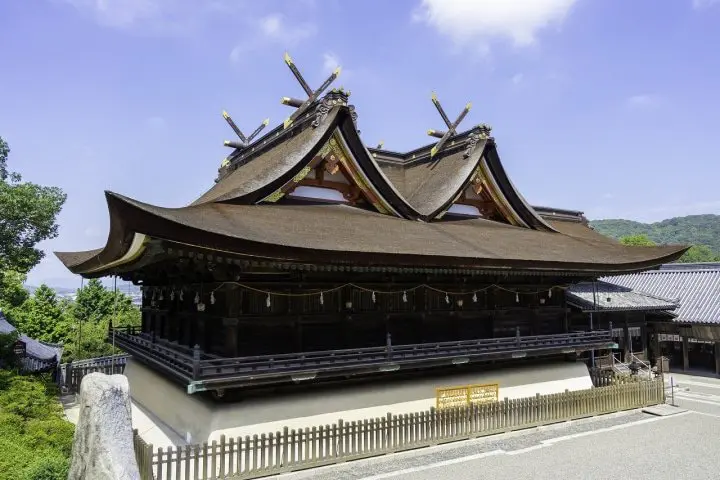
photo by Pixta
Kibitsu Jinja enshrines Oh-Kibitsuhiko-no-Ohkami, a deity who is said to be the model of the Momotaro legend. Yaoki-ishi and Okamaden, which are places for Shinto rituals, are also famous as sightseeing spots.
This shrine is famous for the Japanese hydrangeas that bloom in the rainy season, as the colorful flowers light up the grounds. If you have the chance to visit during this season, be sure to view the flowers.
Address: Okayama, Okayama, Kita ward, Kibitsu 931
5. Ryusenji Temple
Ryusenji is a unique Buddhist temple which also enshrines Shinto deities. The temple is also known as a place with mystical powers, and welcomes many visitors.
There is a waterfall on the temple grounds, and visitors can feel the power of the nature surrounding the temple. Ryusenji is also famous for the wonderful view created by the autumn leaves, so it is worth a visit.
Address: Okayama, Okayama, Kita ward, Shimo-ashimori 900
6. Hayashibara Museum of Art
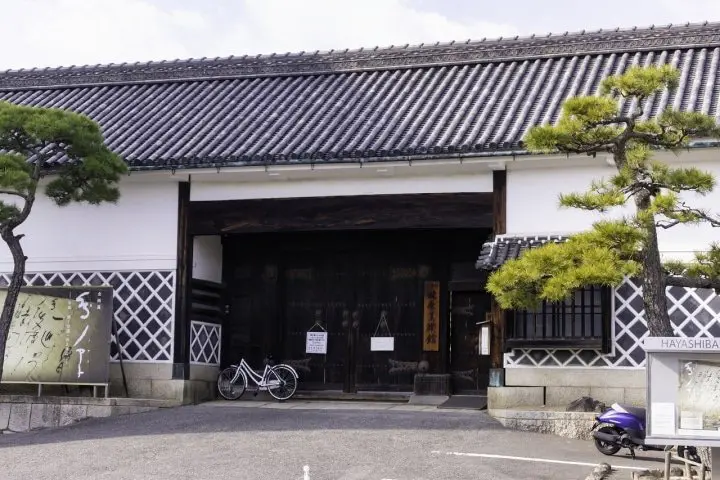
Hayashibara Museum of Art is located on the west wing of the Okayama Castle. The museum displays treasures which were owned by the Ikeda family, the feudal lord which ruled Okayama.
The exhibition shows many items - from swords and samurai armors to traditional works of art. This museum is perfect to appreciate the culture of the days gone by.
Address: Okayama, Okayama, Kita ward, Marunouchi 2-7-15
7. Manekineko Museum of Art
Manekineko Museum of Art is a unique museum in the suburbs of Okayama City. The museum displays 700-plus manekineko (a figure of a beckoning cat) gathered from all over Japan.
The figurines are all different in material, size, and color. There are various manekineko-related items to improve your luck in the museum shop, so be sure to check them out as well.
Address: Okayama, Okayama, Kita ward, Kanayama-ji 865-1
8. Inujima
Inujima is a small island located south of Okayama City. It became famous as one of the sites for the Setouchi Triennale in 2010, and there are various works of art spread out over the island.
There is a beach on the island where visitors can enjoy swimming, so this is the perfect place to relax after enjoying the works of art.
Address: Okayama, Okayama, Higashi ward, Inujima
9. Saidaiji Temple
Saidaiji is a Buddhist temple with a rich history. There are seven buildings in the grounds, and the three-storied pagoda and the sanctuary are known for their solemn atmosphere.
A festival called "Eyo" is held here in February, where men wearing only fundoshi (loincloths) fight for the shingi (sacred wood). Eyo is known as one of the three bizarre festivals in Japan, so if you are going to visit Okayama in February, it might be worth a look.
Address: Okayama, Okayama, Higashi ward, Saidaiji, Naka 3-8-8
10. Bichu Takamatsu Castle Park
This park is built on the former site of the Bichu Takamatsu Castle. Toyotomi Hideyoshi laid siege to this castle and diverted a nearby river by building dams in order to flood it. Visitors can also see the dam built at the time of the siege.
There are bridges across the wetlands in the park, and local residents come to this park for a walk. It might be fun to imagine the siege while strolling in a natural environment.
Address: Okayama, Okayama, Kita ward, Takamatsu 558-2
Recommended Sightseeing Routes in Okayama City
The standard route is to visit the two staple sightseeing spots, Korakuen and Okayama Castle. These two spots are close to each other, and also within a walking distance from the Okayama Station.
This route takes about four hours, and visitors can enjoy the appeal of Okayama in a relatively short time. There are cafes and restaurants, along with souvenir shops near Okayama Station, so the visitors can enjoy dining and shopping as well.
Tourist Information Centers in Kurashiki City
There are five information centers in Kurashiki City: Kurashiki Station, Kurashikikan and Rest Spot in the Bikan Historical Quarter, Kojima Station and Shin-Kurashiki Station. Those visiting Kurashiki for the first time should use them to obtain sightseeing information.
Kurashiki Ekimae Tourist Information Office
Address: Okayama, Kurashiki, Achi 1-7-2
Business Hours:
From April to September 9:00 a.m. - 7:00 p.m.
From October to March 9:00 a.m. - 6:00 p.m.
Telephone: +81-86-424-1220
Kurashikikan Tourist Information Office
Address: Okayama, Kurashiki, Chuo 1-4-8
Business Hours: 10:00 a.m. - 4:00 p.m.
Telephone: +81-86-422-0542
Kurashikikan Tourist Rest Stop
Address: Okayama, Kurashiki, Chuo 2-6-1
Business Hours: 10:00 a.m. - 5:30 p.m.
Telephone: +81-86-425-6039
Kojima Tourist Information Center
Address: Okayama, Kurashiki, Kojima-ekimae 1-107 (Inside Kojima Station)
Business Hours: 9:00 a.m. - 5:30 p.m.
Telephone: +81-86-472-1289
Shin-Kurashiki Station Tourist Information Center
Address: Okayama, Kurashiki, Tamashima, Tsumesaki 390-4 (Inside Shin-Kurashiki Station)
Business Hours: 9:00 a.m. - 5:30 p.m.
Telephone: +81-86-526-8446
6 Recommended Sightseeing Spots in Kurashiki City
1. Bikan Historical Quarter

photo by Pixta
Bikan Historical Quarter is a historic area located by the Kurashiki River. The original town was built 300 years ago in the Edo Period, and various cultural assets such as museums and galleries are also lined up in this area.
The nighttime scene, illuminated by the soft lighting, is a dreamlike sight which attracts many visitors. This is a must-visit spot in Kurashiki.
2. Kurashiki Ivy Square
Kurashiki Ivy Square is a plaza surrounded by red brick buildings. It was originally a textile factory in the Meiji Period and has been turned into a commercial facility comprising restaurants and a hotel.
Kurashiki Ivy Square is located inside the Bikan Historical Quarter, and a large number of visitors come here to take a break. The contrast between the red brick buildings and the Edo Period townscape is one of its many appeals.
Address: Okayama, Kurashiki, Honmachi 7-2
3. Ohara Museum of Art

Ohara Museum of Art, located in the Bikan Historical Quarter, is the first Western art museum in Japan. The collection ranges from the European artists such as Renoir and Monet, to Japanese-style paintings and sculptures.
The museum is comprised of the Main Hall, Annex, Craft Art Gallery, Asiatic Art Gallery and Kojima Torajiro Memorial Hall. Visitors can appreciate different types of artwork in each gallery. Kurashiki has been known as a town to nurture artists, and this museum has played a large role in that tradition.
For further information, please take a look at this article: Monet and Picasso!? Early Works of World-Famous Painters at Ohara Museum of Art.
Address: Okayama, Kurashiki, Chuo 1-1-15
4. Washuzan Observatory
Washuzan Observatory is located by the sea in southern Kurashiki, on top of Mt. Washuzan, which rises 133 meters above sea level. Visitors can take in the view of Seto Ohashi Bridge, which connects the Okayama and Kagawa Prefectures, against the backdrop of the Seto inland Sea. The observatory is also known as a spot to view the setting sun, so a visit early in the evening is recommended.
Address: Okayama, Kurashiki, Shimotsui, Tanoura
5. Kurabo Memorial Hall
Kurabo Memorial Hall is an archive located inside Kurashiki Ivy Square. The hall displays materials about the company history of Kurashiki Boseki (Kurabo), which was the driving force of the textile industry in Kurashiki.
Address: Okayama, Kurashiki, Honmachi 7-1
6. Momotaro Karakuri Museum
Momotaro Karakuri Museum displays historical materials about the folklore hero Momotaro, who is said to have originated in Okayama. There is also an exhibition using optical illusions.
The director of this museum is a musician using chikuwa, a Japanese fish paste product, as an instrument. The chikuwa concert is held irregularly, so if you're lucky, you might be able to hear the unique sound.
Address: Okayama, Kurashiki, Honmachi 5-11
Recommended Routes in Kurashiki City
The staple route would be to walk around in the Bikan Historical Quarter and move on to the seaside area by the Seto Inland Sea to enjoy the view. There is a cruise on a pleasure boat, where the passengers can enjoy a view of Kurashiki from the sea.
The Bikan Historical Quarter offers a wide variety of activities such as a small boat tour on Kurashiki River and visiting the galleries and museums. There are also workshops where participants can try their hands at pottery and glassblowing, the traditional handcraft of Okayama.
Hot Springs
Okayama Prefecture, blessed with nature, is also famous for its onsen (hot springs). There are various types of hot springs around the prefecture, and some of them are well known in Western Japan. The following are the three most famous areas.
Yunogo Onsen
Yunogo Onsen is a resort located in a remote area, but it has been known for its hot spring that cure illness and injuries. The legend goes that 1,200 years ago in the Heian Period, a priest of high standing was lead to this hot spring by a wounded white heron. So Yunogo Onsen is also called "Sagi no yu" (hot spring of the heron).
The streets are paved in stone, and visitors can enjoy the old-time Japanese atmosphere in Yunogo. There are also free ashiyu (foot baths), so visitors should give them a try as well.
Yubara Onsen
Yubara Onsen is a hot spring area in the northern region of the prefecture. The sand in this area is warmed by the source of the hot spring, and visitors can enjoy the famous sand bath for free, whenever they want.
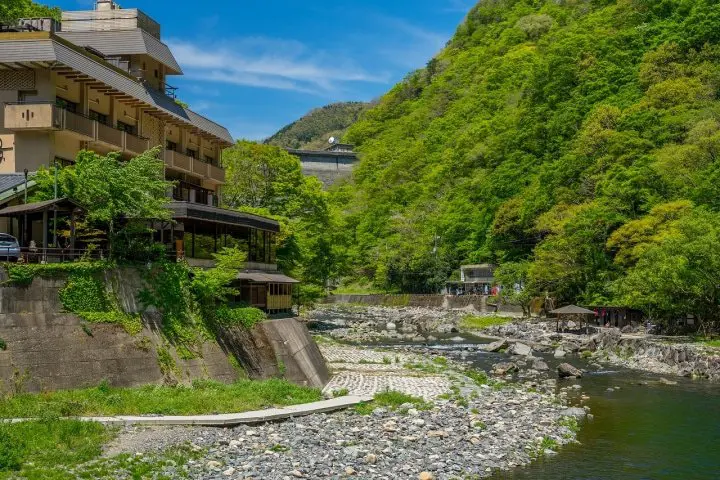
There are three types of hot springs at the riverside open-air bath: "Bijin no yu" (the hot spring of beauty), "Kodakara no yu" ("the hot spring for being blessed with children") and "Choju no yu" ("the hot spring of longevity"). It is said that these hot springs will bless the bathers with their special powers. This is a hot spring to relax in the natural setting.
Okutsu Onsen
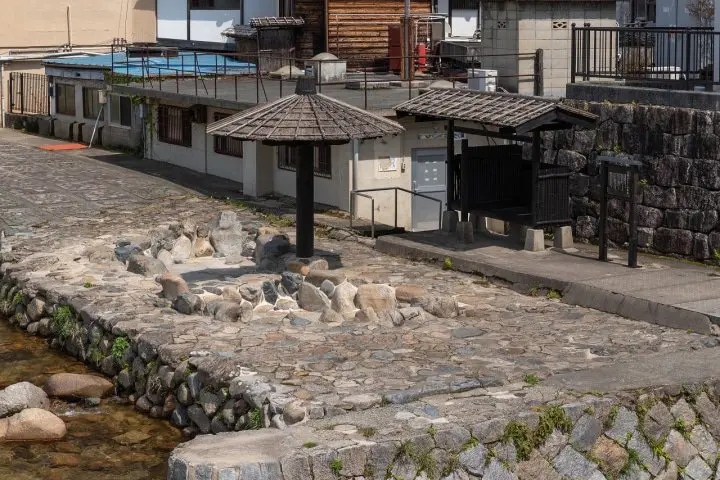
photo by Pixta
Okutsu Onsen is spread out around the Kagamino area, which is located in the northern region of the prefecture. It has prospered since the Edo Period, and many authors and artists have visited this area.
It is also known as "Bijin no yu" ("Beauty bath") since the chemical properties of the hot spring are said to have skin-whitening effects. It might be fun, so give it a try if you have the chance.
Okayama Festivals
Okayama Sakura Carnival
Okayama Sakura Carnival is held in spring in Okayama City. In the sakura (cherry blossom) season, stalls offering food and drink line up along the embankments of the Asahi River, on the east side of Korakuen. A large number of visitors come to enjoy ohanami (sakura viewing).
During the festival, the sakura are lit up with Japanese lanterns such as chochin and bonbori at nighttime. The festival is held for two weeks from the end of March to early April, so be sure to check the schedule.
The Garden of Dreams
The Garden of Dreams is an event at held at Korakuen in August. During the event, the closing time is extended until 9:30 p.m., and visitors can enjoy the nighttime view of the Japanese garden.
The softly illuminated garden has a dreamlike atmosphere. If you have the chance to visit Okayama in summer, don't miss this event.
Okayama Momotaro Festival
Okayama Momotaro Festival is one of the summer festivals in Okayama City. There is a parade of the "uraja odori," a local folk dance, and the fireworks will also be displayed at night. This festival has become a special summer feature in Okayama.
Setouchi Triennnale
Setouchi Triennnale is an international art festival, held on the small islands of Seto Inland Sea. Various works of art are created in accordance with the island's history and scenery.
Inujima has been chosen as one of the sites, and the island with its population of 50 welcomed many visitors. Appreciating contemporary art on a small island in Okayama might be an interesting experience.
Bizen Pottery Festival
Bizen Pottery Festival is held in October. Okayama is famous for Bizen-yaki (pottery), and visitors can buy high-quality ceramic ware at a discount price during this festival.
Various events, such as workshops where the visitors can try their hand at a potter's wheel, are also held. This is a festival for those interested in the traditional handicrafts of Okayama.
Activities
Okayama offers a wide variety of activities where the visitors can participate in the local industries: picking fruits such as peaches and muscats, customizing jeans in Kurashiki, and making pottery in Bizen.
Visitors can also participate in outdoor activities such as hiking and sea kayak while taking in the beautiful scenery of Okayama.
Take a look at Okayama Prefecture's official tourism guide.
Souvenirs from Okayama
Foods and Snacks

Okayama Prefecture is located by the sea, with the mountain ranges rising on the north side. Special products such as kibi-dango (millet dumplings), muscat, peach and sake are all popular as souvenirs.
There are local cuisines such as Hiruzen-yaki and Tsuyama horumon (organ meat) udon, unique dishes that can be experienced only at Okayama. Small portions of these dishes are also available as souvenirs, for those who might find themselves craving Okayama cuisine at home.
Other Souvenirs
Okayama offers a wide variety of handcrafts: denim, canvas and glass artwork made in Kurashiki and Bizen pottery. Craft workers have gathered in this area for a long time, and people have marveled at the high quality of their products. They will make wonderful souvenirs of your trip to Okayama.
Shopping in Okayama
Souvenirs Shops
Looking for souvenirs at the various sightseeing spots is one of the joys of traveling. If you can't decide on an item, try the shops near Okayama Station.
There are various souvenir shops near Okayama Station: Okayamakan, Omiyage Kaido Momotaro, Okayama IchiBanGai Shopping Center and Sun Station Terrace Okayama. They all handle the standard souvenir items, so it's worth a look.
AEON MALL Okayama: An All-Round Shopping Spot
AEON MALL Okayama is a shopping mall located south of Okayama Station, comprising various Japanese and international clothing shops and general variety stores.
The mall offers a number of services for tourists, including duty-free shopping. Restaurants are gathered on the sixth and seventh floors, so visitors can also spend their time dining leisurely at this mall.
Hotels in Okayama
There are many budget hotels in Okayama City, especially near the Okayama Station. They offer easy access from the station, moderate fares, and most rooms are equipped with free Wi-Fi along with the basic amenities. The budget hotels are well-balanced in terms of cost performance.
There are luxurious ryokan-type hotels at the hot spring areas such as Yunogo, Yubara and Okutsu. At a ryokan (Japanese-style inn), visitors can not only enjoy the hot spring, but also the fine cuisines made from local products. The fare is expensive compared to budget hotels, but the experience may be worth the price.
For those who want to save on lodging expenses, a guesthouse may be the answer. The fare for a dormitory-type room is approximately 3000 yen per night. Guesthouses may have an inexpensive image, but the U-Rin-An in Kurashiki, renovated from an old traditional house, has an elegant atmosphere. There are other unique guesthouses in Okayama, so they are worth a look.
Local Food in Okayama
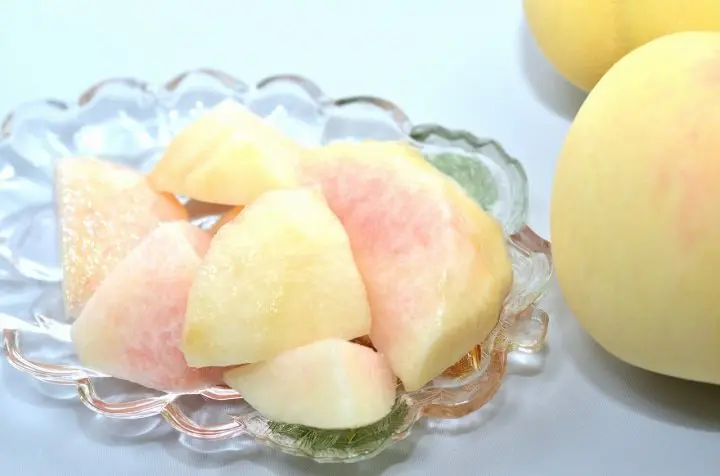
photo by Pixta
Okayama is known as a "Fruit Kingdom" for its wide variety of fruit products, such as peach and muscat. Local fruits are also made into confections as well.
There is also kibi-dango, a rice cake confection, and dishes using the local Chiya beef, that can only be experienced at Okayama. If you have the chance, try these special products.
Local Climate and Clothing
There is a big difference in climate between the northern and southern areas. The former is surrounded by mountains and it often snows in winter. The latter is by the sea, with a moderate climate. Visitors should also be aware that there is also a drastic change in temperature between summer and winter, so they need to dress accordingly. Spring (cherry blossoms) and fall (autumn leaves) may be the best season to visit Okayama, as both the temperature and humidity are stable.
The Story of Momotaro

photo by Pixta
Momotaro is a famous figure in Japanese folklore. An old, childless couple discovers a huge momo (peach). A boy comes out of the momo, and is named Momotaro. He grows up to fight the evil ogres. On his way to the battle with ogres, Momotaro befriends a monkey, a dog and a pheasant by giving them kibi-dango. The word "kibi" happens to be a homophone of the old name for the Okayama area, so it is a popular belief that the Momotaro legend originated in this area.
There are many Momotaro-related places in Okayama, such as the statue at Okayama Station. Souvenirs such as kibi-dango and peaches are also popular, so it might be fun to look for them.
Travel Tips
If you need to exchange currencies, go to the bank, or try the ATM at 7-Eleven.
If you're short on cash, look for the ATM with the "PLUS" logo, which offers cash advance with credit cards.
When checking into hotels, a little Japanese may help. Here are some simple phrases.
"Japan Connected-Free Wi-Fi" is a service for the visitors from abroad. Be sure to download the application in advance.
Check how much the food costs in Japan.

































